Also known as sea elephants, the seals of the genus Mirounga are the largest pinnipeds in the world. Two species have been described. The northern elephant seal (M. angustirostris) and the southern elephant seal (M. leonina). Northerns live in the eastern Pacific Ocean, in the northern hemisphere. Southern seals live in the subantarctic regions of the southern hemisphere. Southern elephant seals are the larger of the two species, but the two species look very much alike with northern seals having a longer, slenderer snout with a deeper transverse groove while inflated. Indeed, the species name for the northern elephant seal means “narrow snout”. The genus name comes from the Australian aboriginal word for the seal, miouroung.
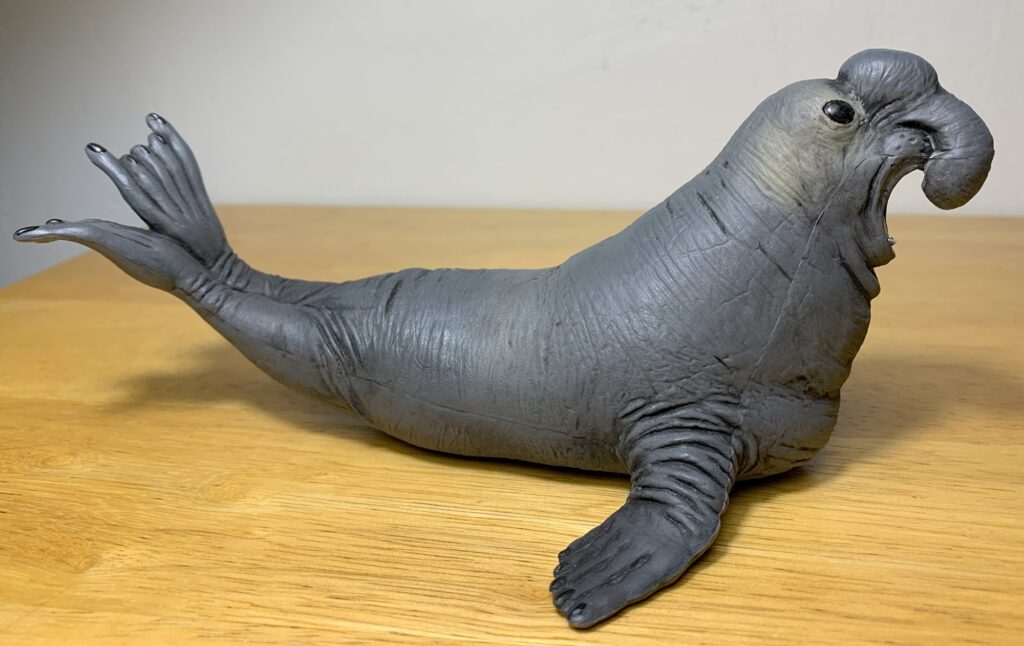
Elephant seals are remarkable and fascinating animals, and some of my favorite pinnipeds. Most of their lives are spent at sea and at an average depth of 600-2,000’ (180-600 meters). But they’re capable of diving deeper, traveling down to 5,000’ (1,500 meters) below the surface and staying there for up to two hours, they’re one of the deepest diving species of marine mammals. At these depths their large eyes aid them in detecting their preferred prey, deepwater fish and squid. Elephant seals haul out on land when molting or during the breeding season and may gather in the hundreds.
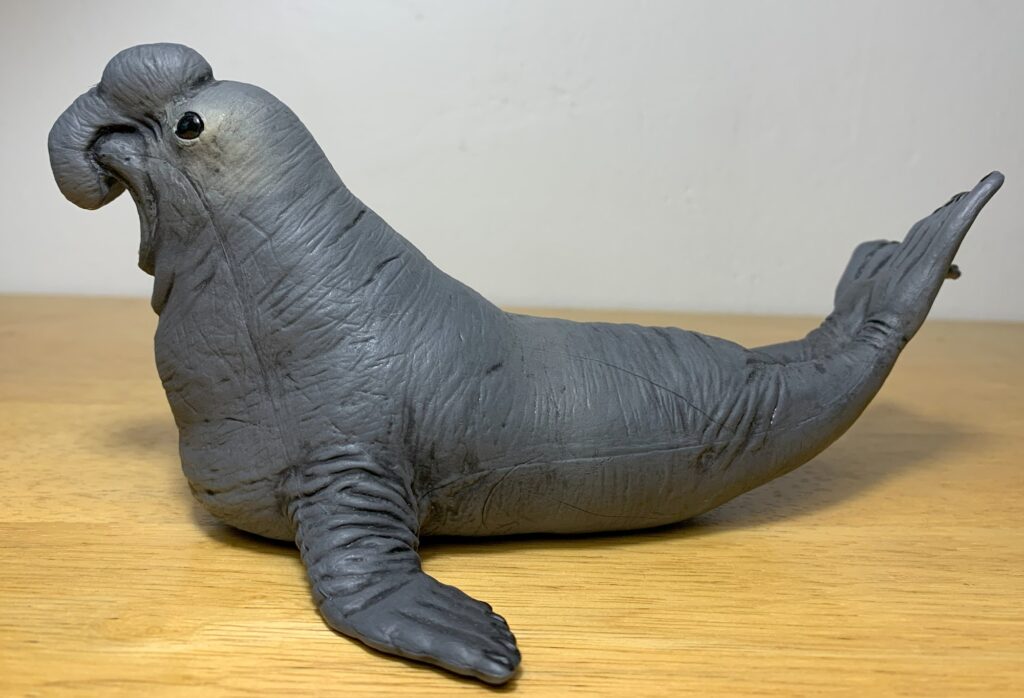
Elephant seals have been decently represented in toy form over the years, but the best are from Papo and Mojo Fun. With the Papo seal retired in 2019 (according to TAW), Mojo’s is now the only one in production. Papo’s is still easy to find though. Mojo’s elephant seal uses the Maia & Borges mold that was used by Schleich between 1998-2002, so it has been around for a while. Although the Papo figure is objectively better, it is rather small at only 4.2” (11 cm). For my own collection I wanted an elephant seal larger than my other pinnipeds, so Mojo’s was the only choice.
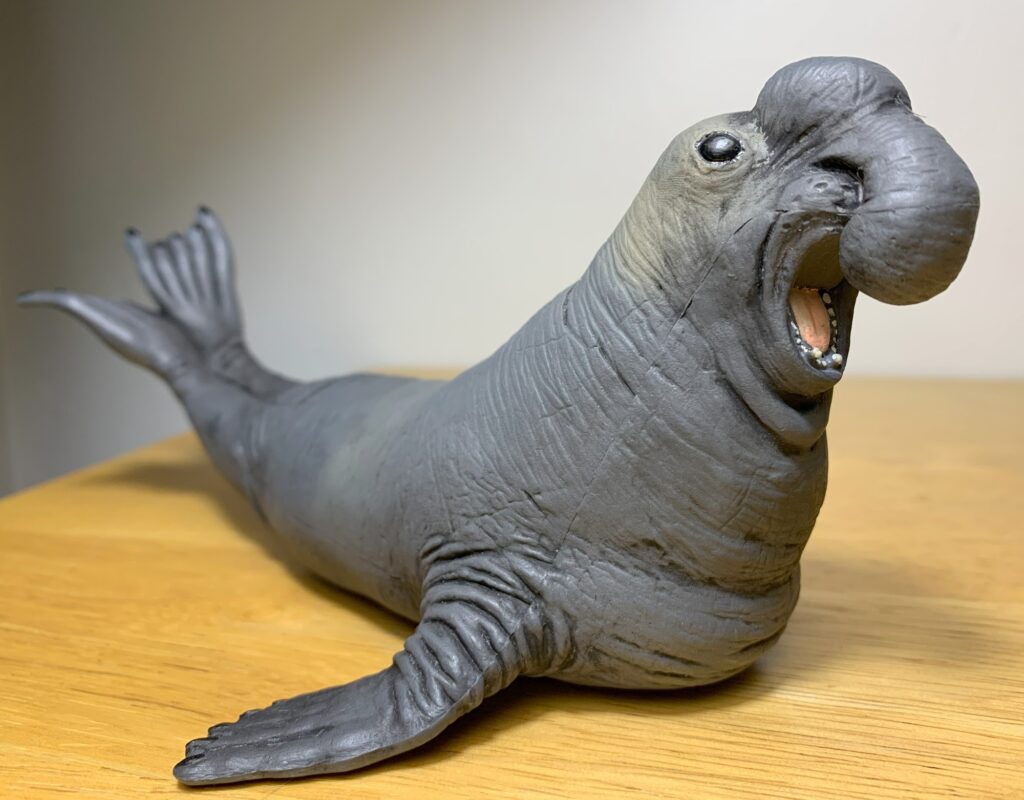
The Mojo elephant seal measures 7.5” (19.05 cm) from its nose to the end of its hindlimbs. Measuring it from head-to-tail gives us a length of 6” (15.24 cm). The figure stands 3.5” (8.89 cm) tall. Male southern elephant seals reach a length of 16’6” (5 meters) while the northern species reaches a length of 13’6” (4.1 meters). The figure comes out to be 1/33 in scale for the southern species and 1/27 for the northern. Females of both species reach the same length of about 10’ (3 meters). Male southern elephant seals can weigh up to 11,000 lbs. (5,000 kg) while the cows weigh about 2,000 lbs. (900 kg). With its enlarged proboscis this figure clearly represents a bull but I won’t speculate as to which species it is.

The Mojo elephant seal is presented in a reared-up posture with the head and hind flippers lifted. The mouth is open, and the proboscis is inflated, as if the seal is letting out an intimidating bellow. The figure is appropriately bulky, with a large head and large bright eyes. The body is too short though, which leads to the head and flippers being too large in proportion to it.

The figure is decently detailed, with bunched up skin folds and wrinkles conveying a blubbery body and thick hide. Individual digits are sculpted on the flippers, complete with nails. A tongue and peg-like teeth (canine teeth are larger) are sculpted inside the mouth but the teeth in the upper jaw are obscured by the proboscis hanging into the mouth. There are no sculpted ear holes.

The thickened and scared skin that should be present on the neck region is missing here. In life, male elephant seals fight for control within their harams by whacking their necks together and biting each other. This bloody affair leads to the skin in this region being thick, cracked, and tough, like tree bark. Papo’s figure illustrates this well.
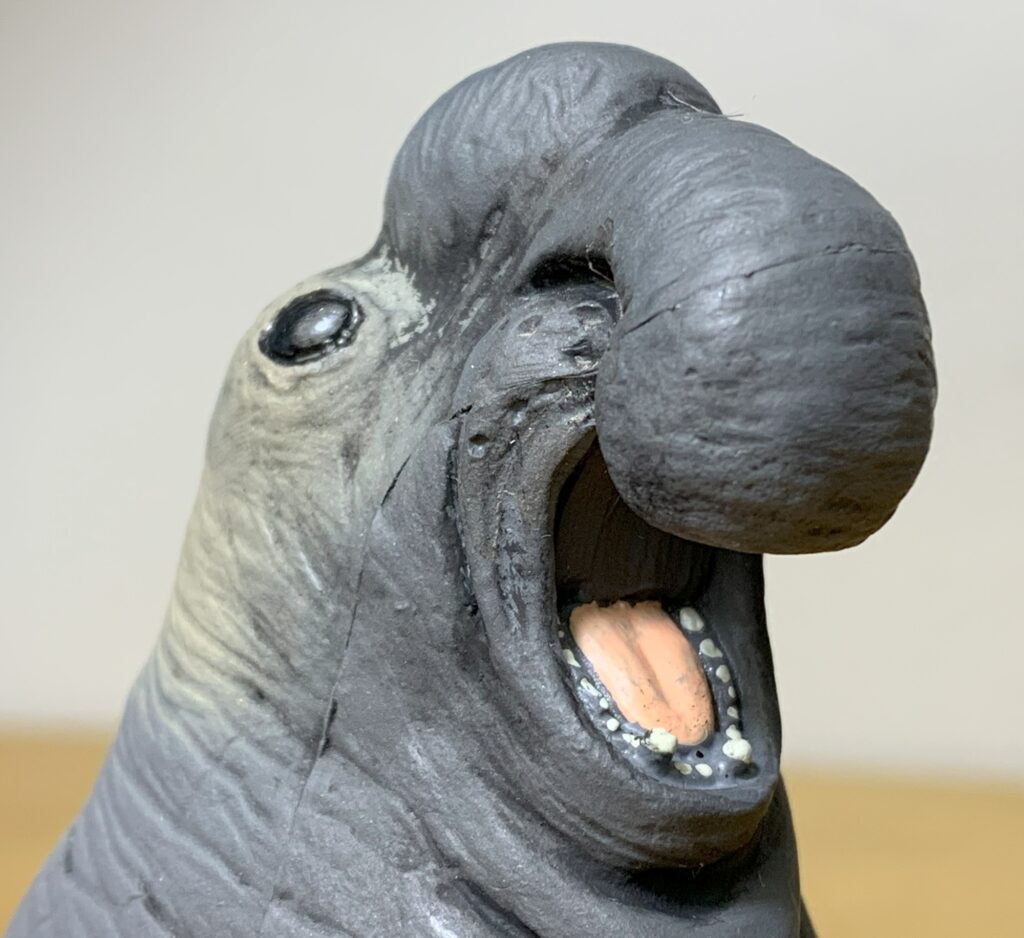
The figure is painted dark gray which suggests that it is a freshly molted individual. Not long after molting the color fades to tan, yellowish-brown, or dark brown. The teeth are white, and the tongue is pink, but the back of the mouth isn’t painted. The eyes and claws are painted black with a glossy finish.
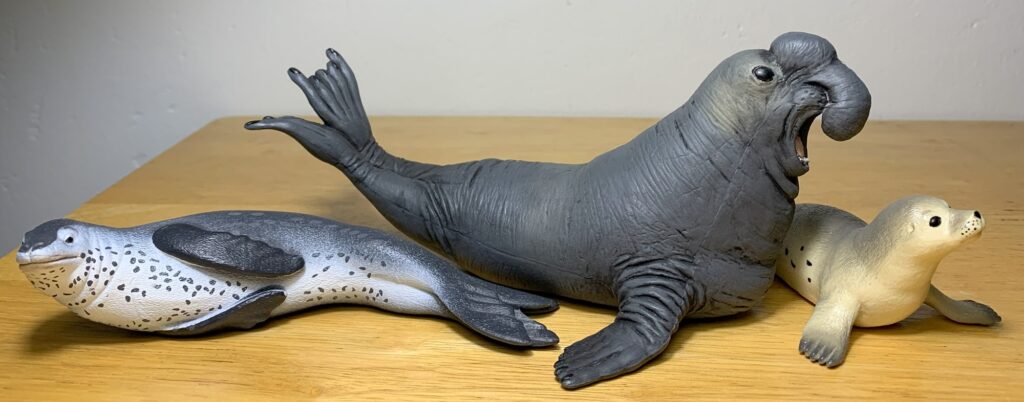
Aside from some off proportions and a lack of calloused skin on the chest, the Mojo elephant seal stands up rather well, especially given the age of its mold. And what it lacks in anatomical accuracy, it makes up for in size and shelf presence. There’s definitely room in the market for a new and improved elephant seal, however, and it’s amazing that we’ve never gotten a standard sized figure of one from Safari or CollectA, or that Schleich hasn’t produced a new one. Until a new one is made, I’m happy to have the Mojo elephant seal in my collection. This figure is currently in production and retails for $20-30.
Disclaimer: links to Ebay and Amazon on the AnimalToyBlog are affiliate links, so we make a small commission if you use them. Thanks for supporting us!




Based on the size of the trunk, this is a northern elephant. Southern ones have smaller trunks despite being much bigger than northerns.
Ah! But the northern elephant seal’s snout typically presses against the roof of the mouth when inflated. We don’t see that here. The northern elephant seal also has a deeper transverse groove that appears to almost divide the proboscis in half when it is inflated, and we don’t really get that here either. A case could probably me made for either species but I’m not really concerned with it. Off bodily proportions indicate that Maia and Borges probably wasn’t too concerned about it either.
I would attribute those discrepancies to a simple lack of that particular knowledge on the part of the sculptor. I suspect they simply looked at images of elephant seals and leaned towards the ones depicting northerns due to their larger trunks.
The features you both describe are ‘soft’. I don’t think it’s realistically possible to assign a species to a generic elephant seal figure with any certainty.
I have the Papo as a northern for my personal collection, mainly because of it’s smaller size (I would hope a new figure made by a western company would be larger…). But my decision wasn’t made based on any morphologic feature.
I ultimately agree, which is why I didn’t assign a species to it in my review. I do notice that the Papo elephant seal is tagged as both species though. Only the genus should probably be tagged.
I believe both species were tagged in the Papo because it could go either way. That was probably used as a sorting aid, that way if someone was to click on a species to see all reviews of that species, it would come up either way. I have done something similar for some of my generic figures and I think sbell has, too.
Think I should tag both species in mine too then?
if you’d like to, sure! That way if someone uses either name as a sorting tactic it will come up. I wouldn’t do this with a rather speciose genus, but since there’s only two (and not many elephant figures out there to begin with), I don’t think it will be overwhelming. But I’ll leave it up to you 🙂
What is its difference with Schleich elephant seal?
It’s the same sculpt; Maia and Borges produced this sculpt for both Schleich and Mojo Fun.